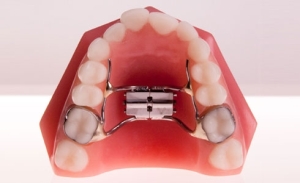 We all love sunshine! It feels wonderful to be out in the sun here in beautiful Sioux Falls, SD, plus it also has numerous health benefits. Sunshine elevates our mood, enhances our immune system functions, and aids in the vitamin D production in our bodies.
We all love sunshine! It feels wonderful to be out in the sun here in beautiful Sioux Falls, SD, plus it also has numerous health benefits. Sunshine elevates our mood, enhances our immune system functions, and aids in the vitamin D production in our bodies.
Vitamin D Is A Key Part Of A Healthy Smile
Did you know that Vitamin D is essential for good oral health?
When you’re undergoing orthodontic treatment, healthy teeth and gums are especially important. Vitamin D supports good oral health in two ways:
Vitamin D Aids Our Bodies In The Absorption And Utilization of Calcium
One of the major functions of vitamin D is moderating other vitamins and minerals, including calcium. Calcium fortifies our teeth and supports jaw and bone strength. That’s why milk, a good source of calcium, is fortified with vitamin D.
Numerous studies have shown a greater cavity risk for people living in areas of the world with little sunlight…sometimes as much as double the risk for developing cavities.
Vitamin D May Help Fight Periodontal Disease
Vitamin D also acts in the body as an anti-inflammatory agent. Periodontal disease is the number 1 cause of tooth loss in adults, and it occurs as a result of inflammation of the gums due to harmful bacteria.
Several studies have found that people who have high levels of vitamin D are less likely to have bleeding gums and gum detachment.
Getting Your Daily Dose Of Vitamin D
It doesn’t take long to get the vitamin D your body needs from the sun; as little as 15 minutes a day. But for those times when you can’t get your daily dose of sunlight, you can also get vitamin D from these foods:
• Vitamin D fortified milk, yogurt (whole, nonfat, or reduced fat), soy milk, or orange juice
• Vitamin D fortified cereals
• Egg yolks
• Fatty fish, such as tuna canned in water or sardines canned in oil.
• Beef or calf liver
• Cheese
• Vitamin D supplements
Get Yourself A Little Sunshine Today!
Just remember, you need to be careful about how much sun exposure you’re getting. You don’t need to sunbathe all day to get the vitamin D your body needs! Take this advice as a good reason to get outside today and soak up a few beneficial rays of that glorious sunshine!
Thank you for trusting Horner Barrow Orthodontics with your family’s oral health. We truly appreciate you!



